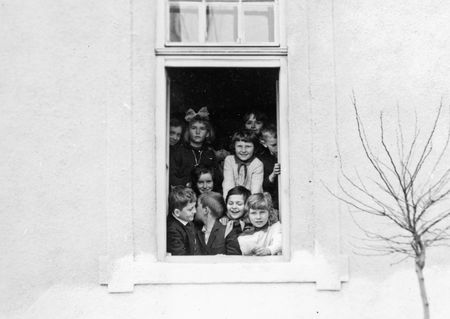February 20 is the World Day of Social Justice. As the related resolution adopted by the UN General Assembly recognizes, “social development and social justice are indispensable for the achievement and maintenance of peace and security within and among nations.” The central commitment this year is “to strengthen global solidarity and to re-build trust in government.”
On the World Day of Social Justice, the Blinken OSA Archivum is proud and grateful to announce that our catalog has been enriched with a thorough description by sociologist Gábor Havas. The series-level description of the in-depth interviews conducted in the framework of the 1971 national survey on the Roma, led by István Kemény, provides a detailed source material not only on the history of the research, but also on the fate of the documents produced during the research. The archival history and the content summary are available both in English and Hungarian.
István Kemény worked at the Institute for Sociology at the Hungarian Academy of Sciences, when he carried out the Roma survey. An institution allowing such research programs could exist, as explained by Kemény in his biographical interview with the Black Box Foundation, because when the institute was founded in “[19]63-64, the general mood was pro-reform. And it was in the context of this that this minimal concession was made, that a sociological research group was set up, and it was also in the context of this that it was decided that if economic reform was introduced, then economic reform had social consequences. And they did not know what was going on in society. It would be good to know that. . . . So that the leadership had at least basic information about what was going on. And then from that they could deduce what would happen if something was introduced.” Thus, in 1970, to help the integration or rather the assimilation of the Roma (in order to alleviate labor shortages), the Institute for Sociology was commissioned to carry out the survey, which was the first attempt in the 20th century to assess the Romani population and their living conditions in Hungary.
On the Blinken OSA Archivum blog, we summarized the history and significance of the research in a post entitled “‘It Wouldn’t Hurt to Talk More About Gypsies’ – A Pioneering Research on the Roma 50 Years Ago Outlined a Dramatic Picture.” According to the experts interviewed then, first, “the most important finding of the 1971 survey was that the social conditions of the majority of the Roma population were worse than that of the poorest non-Roma families. This corresponds with the structural violence that—either in the lack of systemic interventions, or despite project-level interventions—sustains the conditions of the Roma, and produces new forms of racism” (Angéla Kóczé, CEU Romani Studies Program), and second, “this is where we are today, more than 30 years after the end of Socialism: close to two-thirds of the Roma population live in poverty or exclusion, and many in extreme poverty, without any prospects. School segregation is rising, around two-thirds of the Roma youth are early school leavers. To this day, hundreds of thousands live in segregation, including a lot of children” (Zsombor Farkas, ELTE-TÁTK).
The in-depth interviews conducted under the guidance of István Kemény were recorded on tape and later typed up. A varying number of transcripts are preserved at the Blinken OSA Archivum in the István Kemény Personal Papers and in the Records of the Roma Press Center (RSK). In the course of processing the latter, it was decided—on the suggestion of Gábor Havas—to make all the surviving interviews available in a single collection: the Archivum therefore made photocopies of the transcripts found exclusively in the Kemény Papers, and added them to the relevant series of the RSK fonds. This resulted in the most complete collection of transcripts, to which Havas provided a series description recording the history of not only the interviews, but most importantly of the transcripts themselves as well.
It is well known that István Kemény’s career and life in Hungary in the 1970s was derailed after he exposed the existence of poverty in Hungary. On the World Day of Social Justice, it is worth highlighting the fact—also leading to the above challenges of archival processing—that not all the interview transcripts survived. As Havas states in his new description, “In theory, a full set was submitted to the Institute for Sociology. In the mid-1980s, Gábor Havas was contacted by a staff of the Institute, informing him that the documents of the 1971 Roma survey were being scrapped and he must hurry there to save what he can. Havas inspected the papers placed in cardboard boxes in the corridor, and transported all of the interviews to his home. Going through them carefully, he established that the set was very incomplete . . . the truth is, in the early 1990s, no one even though about making the set of interviews complete.”


